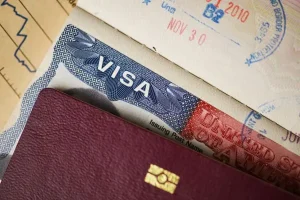Announcements
Understanding emotional boundaries in long-distance relationships is vital for success. They help partners maintain a healthy balance, ensuring each person feels valued and heard. Without clear boundaries, misunderstandings can easily arise.
Establishing these boundaries fosters trust and emotional safety, which are essential in any relationship, especially one that stretches over distance. Couples can thrive by openly expressing their needs and limits.
Curious how to implement these boundaries effectively? Keep reading to discover practical strategies that can transform your relationship.
Announcements
Understanding Emotional Boundaries
Emotional boundaries are the limits we set for ourselves in relationships. They help us protect our feelings and ensure we feel safe. In long-distance relationships, understanding these boundaries is important for both partners to maintain a healthy connection.
When partners communicate their emotional boundaries clearly, they prevent misunderstandings. For example, one person may need more alone time while the other might want regular check-ins.
Announcements
Understanding and respecting each other’s boundaries can lead to a more balanced relationship.
Setting emotional boundaries allows both partners to feel more secure. When you know what is acceptable for each other, it builds trust and respect. This understanding is essential in long-distance relationships, where communication may sometimes feel challenging.
Importance of Setting Boundaries
Setting boundaries is crucial in any relationship, but it becomes even more important in long-distance ones. Boundaries help each partner understand their limits and what is acceptable for them.
When you know your boundaries, you can express your needs without fear of being misunderstood.
Setting boundaries also protects your emotional health. It allows both partners to feel comfortable sharing their feelings and concerns. When you respect each other’s boundaries, it builds trust and strengthens the relationship, even from afar.
Moreover, clear boundaries encourage open communication. When both partners know what to expect from each other, they can avoid conflicts. This understanding helps maintain a positive connection, making the relationship thrive despite the distance.
Communicating Boundaries Effectively

Communicating boundaries effectively is key to a successful long-distance relationship. Start by being clear about your needs. Use simple and direct language when discussing your feelings and limits.
This way, your partner will understand what is important to you, making it easier for them to respect your boundaries.
Listening is just as important as speaking when setting boundaries. Give your partner the chance to express their thoughts and feelings too. This two-way communication helps both partners feel valued and understood.
When both sides share, it creates a stronger bond and a deeper level of trust.
Regular check-ins are a great way to keep the conversation active. Make it a habit to talk openly about how each of you feels regarding your boundaries. This approach can lead to adjustments as the relationship grows.
By continuing to communicate, you strengthen your connection and ensure a healthy relationship, even from a distance.
Managing Emotions from Afar
Managing emotions from afar can be challenging in long-distance relationships. Strong feelings may arise due to separation, but recognizing them is the first step.
When you feel sadness or anxiety, it’s important to acknowledge these emotions instead of bottling them up. Expressing your feelings can help you cope better and prevent misunderstandings with your partner.
Regular communication is essential to manage emotions effectively. Share your thoughts with your partner openly and honestly. Talking about your feelings can make the distance feel smaller and your bond feel stronger. U
sing video calls or voice messages can enhance this emotional sharing, allowing both partners to connect on a deeper level.
Finding ways to stay emotionally connected is also important. Create shared experiences, such as watching a movie together online or playing games.
These activities can help reduce feelings of loneliness and keep the excitement alive in your relationship. By finding unique ways to connect, you can nurture your relationship and manage your emotions better.
Strategies for Healthy Relationships
To maintain healthy relationships in long-distance situations, setting regular check-ins is vital. These check-ins provide a chance for both partners to share their feelings and experiences. B
y creating a routine, you build a sense of stability and connection, helping you stay in touch with each other’s lives despite the physical distance.
Another effective strategy is to prioritize quality time together, even from afar. Schedule virtual date nights or activities you both enjoy.
Whether it’s cooking together through a video call or playing online games, these shared moments create fun memories that strengthen your bond and remind you of your commitment to each other.
Lastly, being open to compromise is crucial for a healthy relationship. Understand that both partners may have different needs at times. Discuss these needs openly and find a middle ground that works for both of you.
This approach nurtures respect and understanding, allowing your relationship to grow stronger as you navigate challenges together.
Respecting Personal Space
Emotional boundaries in long-distance relationships include understanding the importance of personal space. Even when miles apart, it’s essential to allow your partner room to breathe emotionally and mentally.
This means not expecting constant replies or availability. Giving each other space can help maintain individuality and prevent emotional burnout. Respecting this need creates a healthier dynamic where both partners feel free, not pressured.
Dealing with Misaligned Expectations
One common issue related to emotional boundaries in long-distance relationships is mismatched expectations. One partner might expect daily calls while the other prefers weekly check-ins. These differences can lead to tension if not addressed.
Discuss expectations early and revisit them as your relationship evolves. Clear and honest conversations help avoid disappointment and ensure both partners are on the same page about emotional availability and communication styles.
Building Trust Through Consistency
Emotional boundaries in long-distance relationships thrive on consistency. When both partners show up regularly—through messages, calls, or simple gestures—it builds a foundation of trust and security.
Trust isn’t just about avoiding betrayal; it’s about showing that you value your partner’s emotional needs. By being consistent and dependable, you reinforce emotional boundaries in a positive way that deepens your connection over time.
Balancing Independence and Connection
One of the key aspects of emotional boundaries in long-distance relationships is maintaining a balance between independence and connection. It’s important to stay emotionally close without becoming overly dependent on each other.
Encourage personal growth, hobbies, and friendships outside the relationship. When both partners feel fulfilled individually, they bring more positivity into the connection. This balance keeps the relationship strong and emotionally healthy over time.






